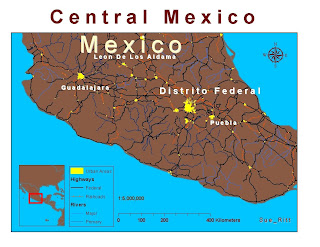For reasons beyond my control, I cannot post a link that you can click on to get to my presentation. I have tried in both IE and Mozilla and on the TS without success. If you are interested in viewing my "On Your Own Site Location Analysis", please cut and paste this link:
http://students.uwf.edu/sr31/OWN SITE.ppt

Palm Beach County Site Analysis by Sue Ritt
Palm Beach County is the largest county in the state of Florida in area. As of 2008, the rapidly-growing county's estimated population was 1,294,654. Palm Beach County borders Martin County to the North, the Atlantic Ocean to the East, Broward County to the South, Hendry County to the West, and extends into Lake Okeechobee in the Northwest, where it borders Okeechobee County and Glades County at one point in the center of the lake.
With wealthy coastal towns such as Palm Beach, Jupiter, Manalapan, and Boca Raton within its limits, as well as equestrian mecca Wellington and golfing haven Palm Beach Gardens, Palm Beach County is Florida's wealthiest county, with a per capita personal income of $44,518 as of 2004.
Mr. and Mrs. Smith, an affluent, established professional couple are relocating to Palm Beach County (PBC) and wish to purchase a new home in an upscale area that has a high percentage of children under the age of 18 and is also close to both their jobs. He will be teaching classes at Florida Atlantic University and she will be practicing medicine at West Boca Medical Center.
Deliverables:
1. Base map showing places, roads, and public lands.
2. One map showing:
a. Distance from Florida Atlantic University (FAU).
b. Distance from West Boca Medical Center (WBMC).
c. Census tracts showing percentage under 18
d. Census tracts showing median home values
3. A map, with analysis, showing the weighted overlays based on the client’s criteria.
Data layers needed:
All files downloaded from Florida Geographic Data Library at http://www.fgdl.org.
Projected Coordinate System: Albers Conical Equal Area
Geographic Coordinate System: GCS_NorthAmerican_HARN_1983
Roads – vector
Public lands – vector
Hospitals – vector
Colleges and Universities – vector
Cities – vector
County boundary – vector
County demographics – database file
Census tracts 2000 – vector and database file
Process Documentation:
1. Add county boundary layers >select and export PBC as layer to use a base for future clips.
2. In ArcCatalog clipped all files to PBC_ctnbnd.
3. Create Location geodatabase > imported multiple files > set coordinate system to same as display, extent to PBC_ctnbnd, raster 300, mask to PBC-ctnbnd.
4. Create results geodatabase.
5. Open ArcMap > Document map and set environments
6. Create base map of PBC.
7. Calculate distance from FAU
8. Calculate distance from WBMC
9. Create field for percentage
10. Create median house values.
11. Create weighted overlay with each factor weighted at 25%
12. Analysis of results and presentation.
References
Photo credits:
http://www.dreamhomedesignusa.com/images/Photoshop%20Images/Exotic_Mediterranean_red.jpg
http://www.surfline.com/travel/surfmaps/us/florida_south/images/warnke_redreefpark.jpg
http://upload.wikimedia.org/wikipedia/en/b/bd/Palm_Beach_County_Seal.png
Palm Beach County Data Captions (2010). Wikipedia. Retrieved June 30, 2010 from http://en.wikipedia.org/wiki/Palm_Beach_County,_Florida.
Data Layers (2010). Florida Geographic Data Library. Retrieved June 30, 2010 from http://www.fgdl.org.






















 I had trouble with the annotation conversion for the city labels in this exercise. I think the TS lagtime might have played a role since I ended up with two or three different labels for each city. Again I saved, saved, saved so starting over was not as frustrating as in the last exercise.
I had trouble with the annotation conversion for the city labels in this exercise. I think the TS lagtime might have played a role since I ended up with two or three different labels for each city. Again I saved, saved, saved so starting over was not as frustrating as in the last exercise.

